Mary’s Life in Stained Glass
Before the Birth of Jesus
Over the last couple of decades I have been fascinated by religious stained glass, and have amassed a considerable number of photographic images. Recently I took stock of those I have that feature Mary, and found them fascinating for their variety and beauty. I hope, in this series of articles, to show you some of them.
Every window had a donor, a church official or body that commissioned it, a designer, and a window maker. The donor had an image in his or her mind, and convinced the church authority to accept it. They then chose an artist to translate the donor’s image into a sketch (usually a watercolour) that satisfied all three of them. The artist then made a life-size pattern to give to the window maker, who then picked the coloured glass based on the watercolour, and painted the faces.
Is it any wonder that the windows have so much variety in the way they represent the Blessed Virgin Mary?
Looking at Mary’s life, the earliest depiction I have seen is of Mary with her mother, St Anne. This example [marked with “1”] is from Our Lady of the Sacred Heart church, Randwick, Sydney, and I have another from St Anne’s Anglican church in Strathfield, Sydney. The designers had scant regard for historical accuracy, because both windows feature books rather than scrolls, and the Strathfield window had Mary on a kneeler.
The next in sequence is Mary’s betrothal to Joseph (Matthew 1:24). This one [2] is also from Our Lady of the Sacred Heart church, Randwick, Sydney. Mary looks like a teenager, and Joseph is much older. The artist has placed Joachim, Anne and a rabbi in the background. It is interesting to note that Mary is invariably depicted in blue, and Joseph with a lily. Blue is associated with nature, royalty and peace. There is a legend that God caused a lily to sprout on the end of Joseph’s staff as a sign that he was to be Mary’s spouse.
Then, of course, there is the Annunciation. The essential elements are the Archangel, the Holy Spirit and Mary. Perhaps this event is so special to me because the first window [3] I successfully photographed was of the Annunciation. My wife and I were visiting our daughter in Italy in 2002 when we stopped for coffee in a small hill village called Bibbiena, Tuscany. I saw a small church, went inside, saw the window and just took one shot. Amazing!
Since then I have photographed over 50 Annunciation windows. The more conventional view is perhaps the one in the side chapel of St Mary of the Angels, Wellington [4], and the most outrageously modern is in the church of Sts Peter & Paul, Pievesestina, Italy [5]. And it would be hard to find more colourful ones than those on the next page, one in St John the Baptist church, Windsor, England [7], the other in St John’s, Trentham, Upper Hutt [8]. The latter was designed by my friend Beverley Shore Bennett of Waikanae and made at Miller Studios, Dunedin.
Immediately the archangel left Mary, she went to care for her cousin Elizabeth - an event called the Visitation. Of the several windows I have seen, the most traditional are again in St Mary of the Angels, Wellington [6] and in St Mary’s Catholic Church, Aughnacloy, Northern Ireland [11].The climax of the Visitation was Mary’s Magnificat, and the whole event is depicted in two very simple windows in the Mary Chapel, St Paul’s Cathedral, Wellington [9 & 10].
The final scene before the Nativity is in St Mary of the Angels [12] which shows Mary and Joseph being denied entry into the inn and houses in Bethlehem, because according to Jewish law she was expecting and therefore “unclean.” They had no recourse other than the stable.
(To be continued)

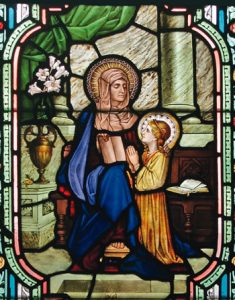
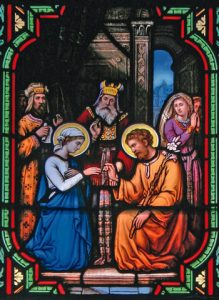
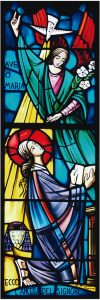

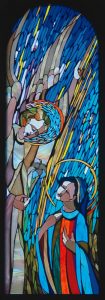

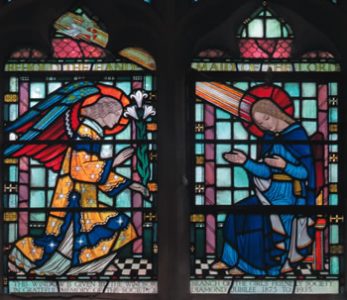
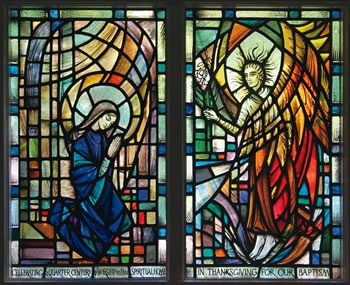
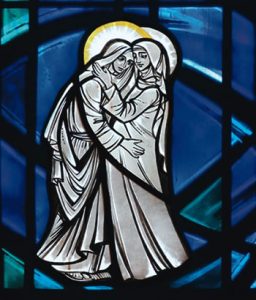

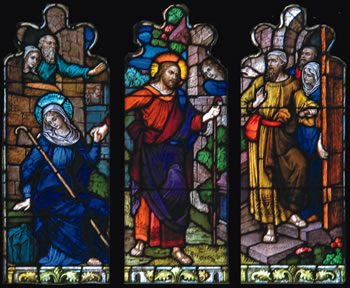
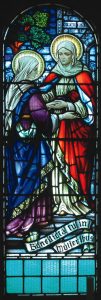
 Entries(RSS)
Entries(RSS)